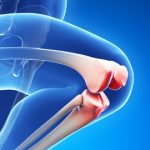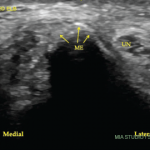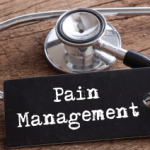High-intensity strength training may be no more beneficial than low-intensity strength training at improving pain and joint compression in patients with knee osteoarthritis, according to a recent study.


High-intensity strength training may be no more beneficial than low-intensity strength training at improving pain and joint compression in patients with knee osteoarthritis, according to a recent study.

COVID-19 isn’t the only viral infection on the rise across the globe, so is chikungunya, which can cause arthritis-like symptoms and may lead to long-term joint pain.

In 1905, two pediatricians in Vienna, Austria, published Serum Sickness, a detailed 120-page monograph that was the first to carefully characterize the syndrome.1 The work would go on to become a classic, ultimately helping illuminate many important questions in immunology. Antitoxin Serum Treatments In the late 19th century, researchers were working to develop lifesaving antitoxins…

Pain is the main reason patients with osteoarthritis (OA) seek medical help because of the substantial burden it imposes and its impact on quality of life. Pain can actually change the way the central nervous system works. This central sensitization results in more pain with less provocation. And according to results from an observational study…

A study highlights the potential of fasinumab, an anti-nerve growth factor monoclonal antibody, as a pain treatment for osteoarthritis (OA) patients. Research into the risks and benefits of this therapeutic class for OA are ongoing…

Mark H. Greenberg, MD, RMSK, RhMSUS, A. Lee Day, MD, RMSK, James W. Fant Jr., MD, & Christopher G. Mazoue, MD |
A 27-year-old, left-handed man was referred to our ultrasound clinic for left elbow pain. History The patient had been a pitcher on a Minor League Baseball team. Two years before, he developed sudden, severe medial elbow pain while pitching in a game. The pain was associated with some tingling down the left medial forearm. The…

Research has shown ixekizumab improves pain and the sexual health of patients with genital psoriasis…

Carina Stanton |
SNOWMASS VILLAGE, COLO.—The science underlying the neurobiology of chronic pain isn’t something rheumatologists often think about. However, pain is an important reason why patients see a rheumatologist. At the 2020 ACR Winter Symposium in January, Leslie Crofford, MD, gave two presentations addressing pain experienced by rheumatology patients, including a session on the fundamental mechanisms of…

The FDA is considering an application for subcutaneous tanezumab, a monoclonal antibody, as a treatment for moderate to severe osteoarthritis…

Mark H. Greenberg, MD, RMSK, RhMSUS, Elijah Mitcham, MD, Prem Patel, James W. Fant Jr., MD, & Frank R. Voss, MD |
A 65-year-old woman was referred by an orthopedist to a rheumatologist for left knee pain. Previously, in 2014, she underwent left total knee arthroplasty (TKA) for severe osteoarthritis in a different institution. Following the procedure, she experienced severe chronic anterolateral knee pain at rest, exacerbated by walking. Because she was rendered wheelchair bound and required…